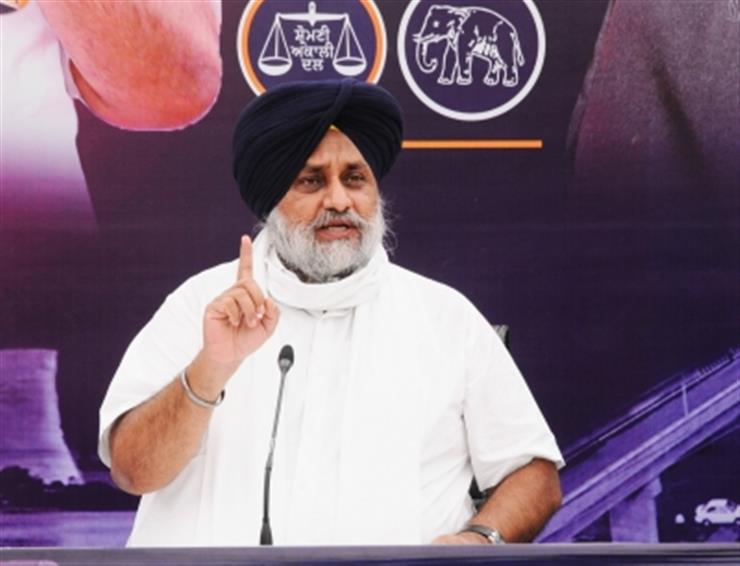TEMPLES HERE ARE DEDICATED TO LORD SHIVA, VISHNU AND MOTHER GODDESS
Uttarakhand having strategic location has a unique landscape. High ecological, rich biodiversity, myths, folklores, unique socio-religious practices, temples, holy shrines, scenic places, snow clad mountains, thick forest cover, plant species make it a favourite destination for tourists, travelers, bird watchers, adventurers, mountaineers and pilgrims.
As mostly, Lord Shiva, Vishnu and Shakti (Mother Goddess) are worshipped in this region hence; almost all the temples and shrines are dedicated to one of these deities.The pilgrimage/Tirthyatras have not only helped to build up historical, bio-physical, socio-cultural, and economic perspectives but also contributed significantly to a comprehensive understanding of Himalayan landscapes. In a landscape livelihood, socio-cultural practices (i.e., spiritual experiences, music, dance, folklore, customs, etc.), and natural resource management practices (i.e., biodiversity conservation, agriculture, watershed management, etc.) evolve.
The beauty of this region has also been eulogised in the Skanda Puran and the scriptures describe the presence of Gods in the serene surroundings of the Chardhams. Haridwar has been the entry point for Gangotri, Yamunotri, Badrinath, Kedarnath and since ages the pilgrims visited these shrines by trekking. The AdiguruShankaracharya trekked all the way to Garhwal from Kerala in the 8th century AD. The foreigners like Lord Curzon, Atkinson, Tilman also trekked and identified new trekking routes in this region.
Garhwal Himalaya is well known not only for its natural beauty, but also for its cultural splendour and flavour. The name ‘Garhwal’ is also associated due to its forts and fort licks which came into existence in the late medieval period. In Skandpuranait was known as ‘Kedarkhand’ and ‘Himvant’. There are sufficient references in the great Indian epics of Ramayana and Mahabharata which highlight not only the physiographic importance of Garhwal Himalaya but its religious and ritualistic traditions. The literary sources clearly indicate association of many Rishis and other pioneering personalities with Garhwal Himalaya such as Rishi Kanva is associated with modern Kotdwara (kanwashram), Rishi Agastya with Agastyamuni and Rishi Jamdagni with Than village. Significance of the Garhwal Himalaya can also be judged through its world-famous Char Dhams’ which are dedicated to the Brahmanical deities of Lord Vishnu, Lord Shiva, Goddess Ganges and Yamuna respectively. Apart from this there are many folk deities, worshiped in different valleys which gives the identity of ‘Dev Bhumi’ to Garhwal Himalaya
Garhwal is inhabited by the people belonging to a number of ethnic groups and castes which have their indigenous culture and traditions, language, dialect, fair, festivals, customs, beliefs, Rituals, values, food habits, dresses, ornaments, Arts. The regional dialects like-Jaunsari, Srinagariya, Salani, Rathi, Bangani, Ranwalti, Gangadi and others are spoken and the dance forms include Bhotia, Cholia, Jhora, Mukhota (Mask Dance), Chanchri, Jhumelo, Chhapeli, Naati, Taandi. The popular traditional folk Songs include Mangal, Chaiti, Chopati, Bajuband, Khuded, Jaagar, Panwada, Chhoda, Harul, Jagar etc. GindiMela, MaghMela, Bagwal, Harela, Phooldei, BissuMela, Igaaspresent very interesting rituals. Nanda devi Raj Jat, Ramman, Paandavlila, Chakravyuha, PanchkoshiYatra, Jakhnritya exhibit rich yatra traditions. Though the tough and rugged physiographic setting allows a communication gap between remotely inhabited communities and the rest of India, these processions, customs, traditions and beliefs provide opportunities of integration.
SUPRENATURAL POWERS WORSHIPPED
Apart from worshipping the natural elements people also worship the supernatural powers including the dead of their own family members. It is believed that various forms of the folk deities appear in the human body and this whole process is called ‘Dev Avataran (incarnation)’ in which the humans dance as deities and bless the devotees which is known as JagarNritya.
The Pandava dance is held in more than 2000 villages of andRamlila is the most popular and the largest theatre performed almost in every village.Ramman (Mask dance of upper Alaknada valley) is now listed as the intangible world Heritage by UNESCO which itself defines uniqueness and value of such folk traditions of Garhwal region.
VARIETY OF CULTURAL PATTERNS IN RIVER VALLEYS
The geographical phenomena minutely differentiate cultural patterns on the basis of river valleys. Thus the cultural patterns vary in Tons, Yamuna, Bhagirathi, Mandakini, Nandakini, Dhauli, Birahi , Nayyaar, Saryu, Ramganga , Pindar, Kosi, and Kali river valleys.
Rituals of Mahabharat related narratives take place only in the river valleys situated in the Ganga and Yamuna valleys. The faith patterns also determine the ecology of cultural practices. The predominant faith systems initially were Shaiva and Shaakta cults. With the passage of time Krishna cult also entered in the form of Naagarjaa and Ramol. It was followed by the Vaishnava cult with the entry of AdiShankaracharya and restoration and re-consecration of the image of Vishnu in Badrinath. Parallel to the classical cults run the worship of indigenous deities numbering in thousands like Mahasu, Nandadevi, Bhairava, GolluDevata, Bagdwaal, Maniknath, Bagnath, Malainaath, Gangnath, AachhariMaataris and others. The deities are also associated with the four elements of nature, i.e., earth, fire, water, sky, and air. The deities of fire and rain are the Yaksas, Nandadevi, deity of earth is Bhoomyaal, deity of earth and water is Naag, sky is represented by the sounds of Dhol. NandadeviRajjat, a 12 yearly processional performance, invites participation of more than 35,00000 devotees, covers a distance of 280 kms in the higher Himalaya, taking a trekking time period of 22 days. Festivals like Maun, mass fishing festival, draws a crowd of 30000 village folks.The tradition of procession of deity is not merely religious but has certain political value which can be noticed through the specific routes marked for the movement of deity which cannot be taken by other deities. There are hundreds of moving deities in Garhwal Himalaya like- Mahasu, Chandika Devi, Uma Devi, Jakh etc. the Procession of deity has another flavour when it is shifted from its shrine to seasonal shelter and again when it goes to its main shrine from the seasonal shelter. The dolis of Badrinath, Kedarnath, Gangotri and Yamunotri are always shifted to their seasonal shelter from their main shrines after a period of six months. Lord Badrinath resides at Joshimath, Kedarnath at Ukhimath, Ganga at Mukhba Village and Yamuna at Kharsali village during winters.
The earthquake –resistant houses peculiar to the architectural identity of Yamuna valley is said to be 5000-year-old by the Archaeology department of our University. Briefly speaking the substratum of the culture is predominantly agro-pastoral which has achieved a perfect synthesis with the classical culture of the subcontinent

















